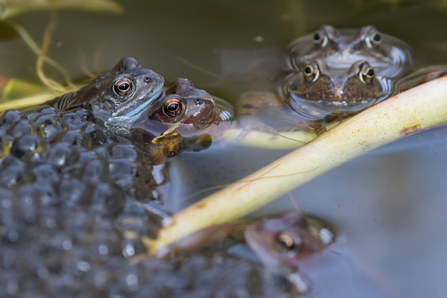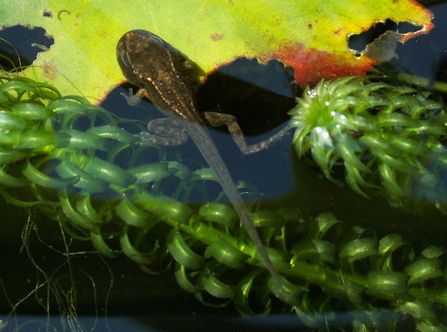You may spot more frogs around your ponds from late February to March, depending on the temperature, where they have been spending some time conserving energy over the cold winter months. They can survive underwater during hibernation by absorbing oxygen through their skin. Remaining underwater will keep the frogs safe from predators and allow male frogs to immediately claim territories once they awaken.
Males will attract females to established territory by croaking loudly and repetitively – you may overhear larger crowds of croaking where there are several frogs in one place. There are often larger populations of male frogs, leading to aggressive battles to win the available female mates. During the breeding time, males develop enlarged pads on their thumbs which help them hold on to the females during mating or amplexus. Once bonded, females will lay many hundreds of eggs in a large clump which the male fertilises whilst still grasping his mate.



